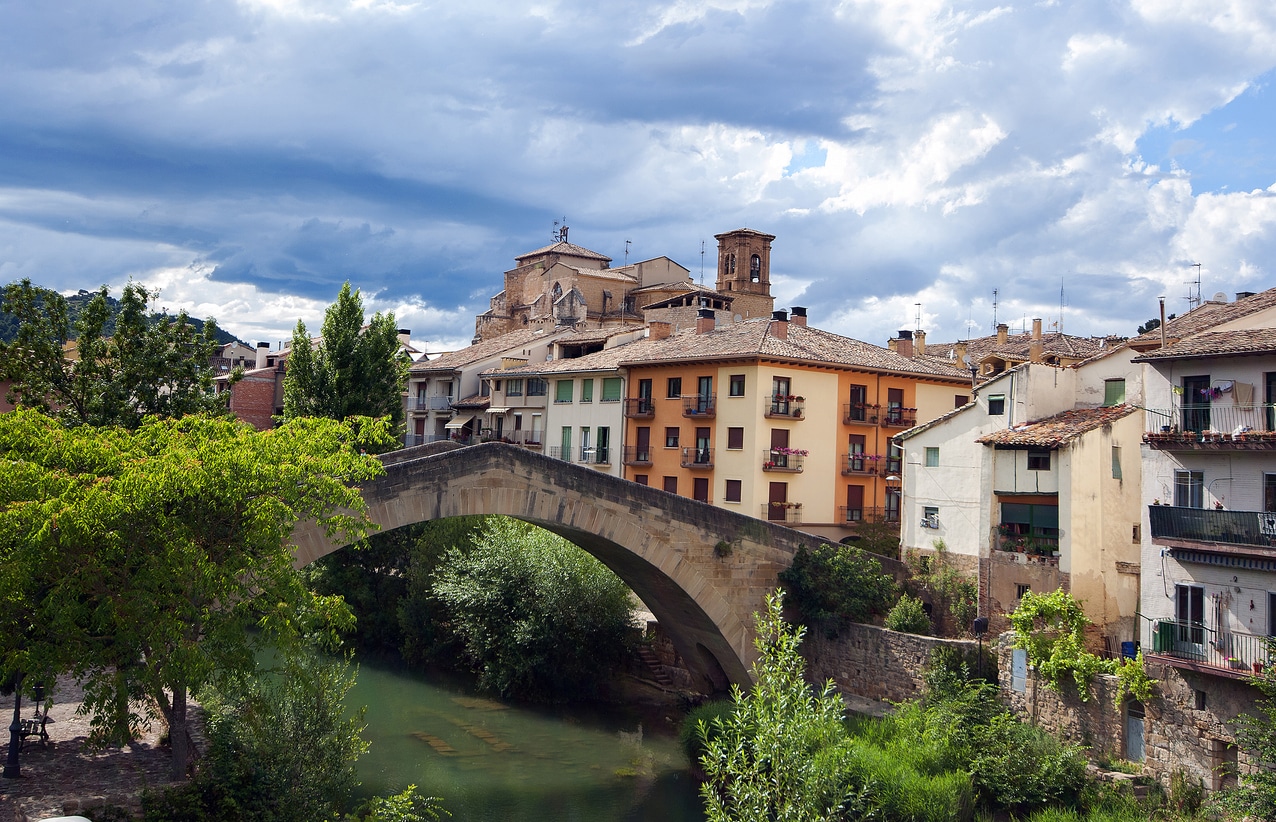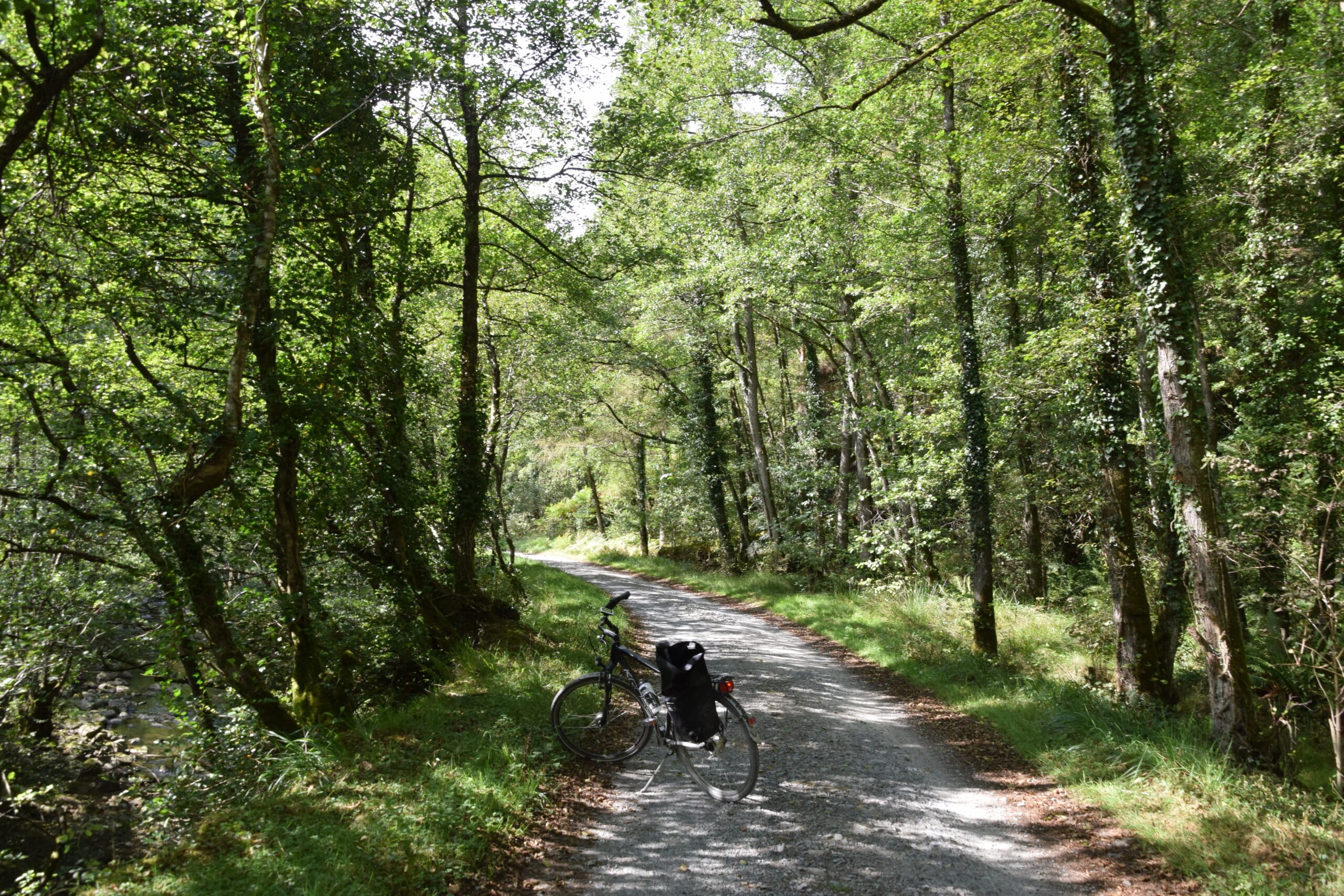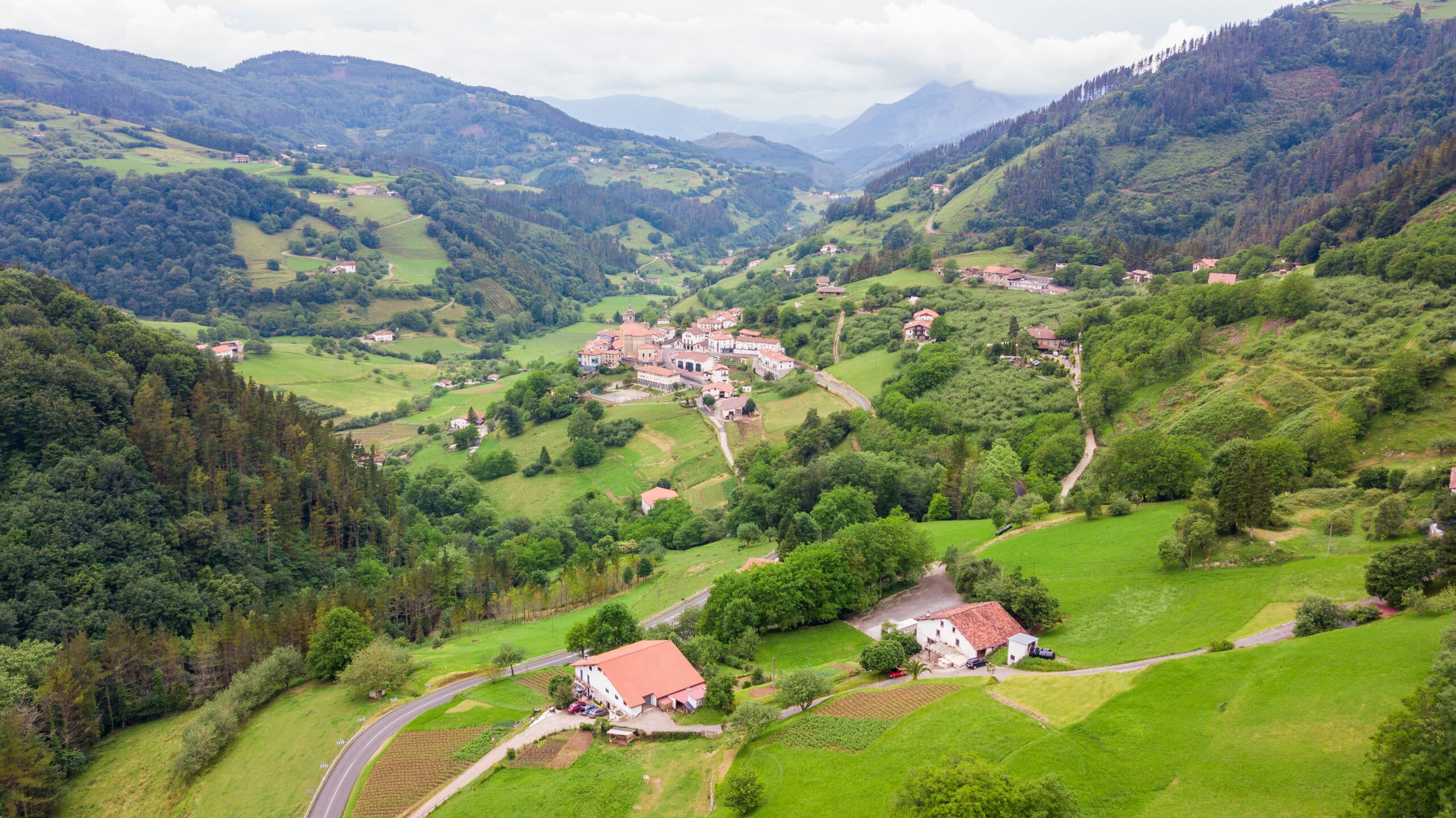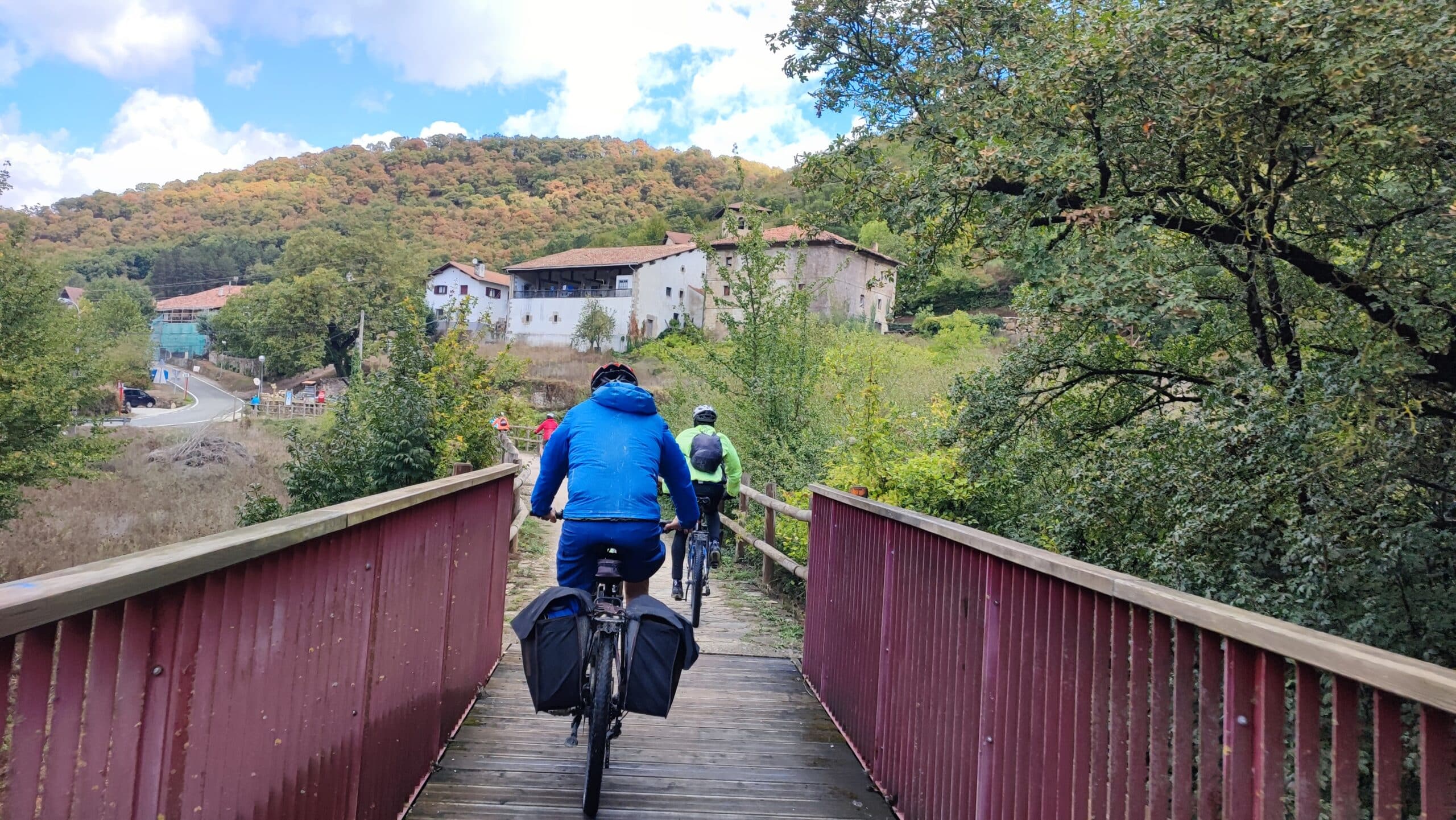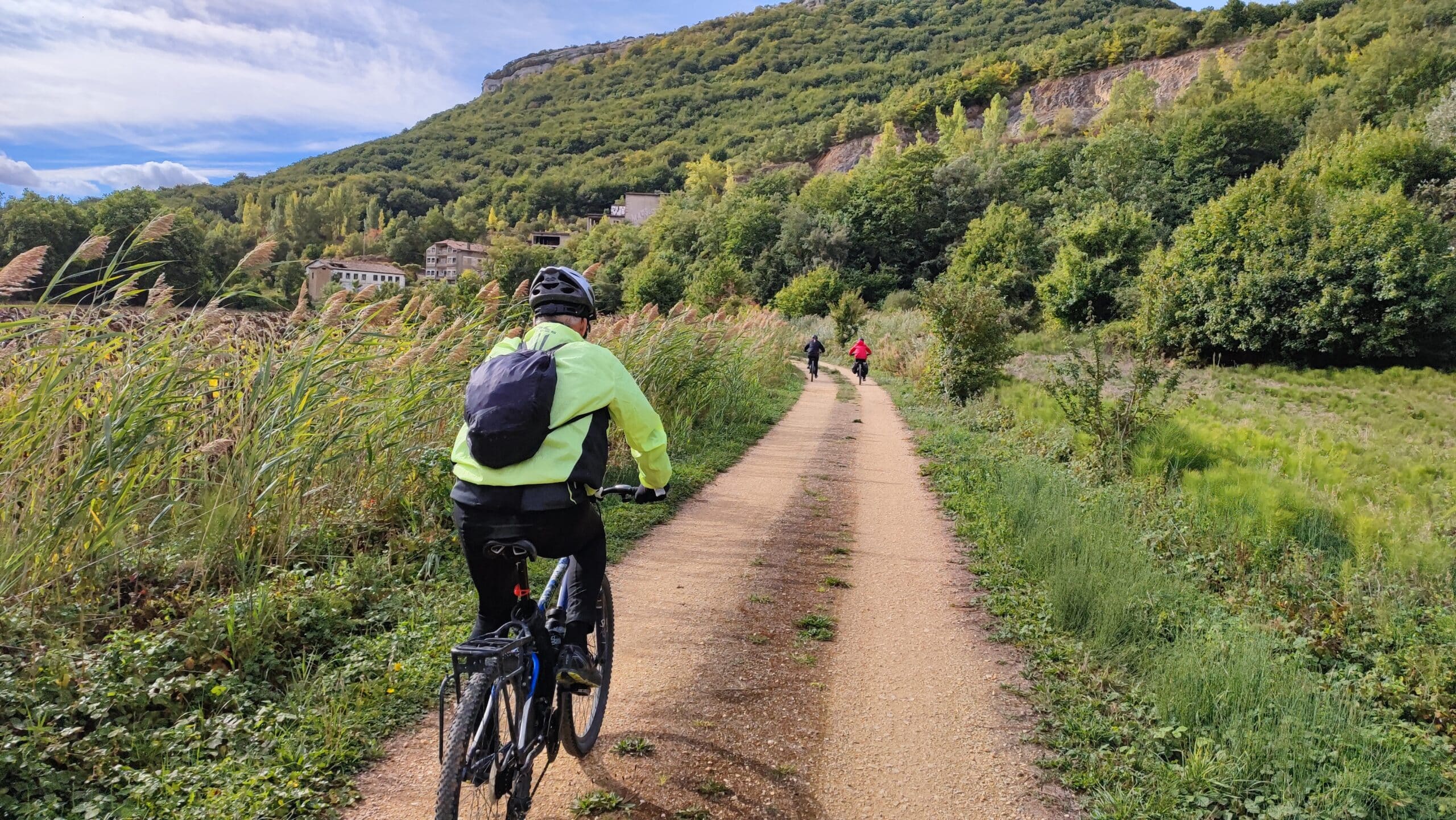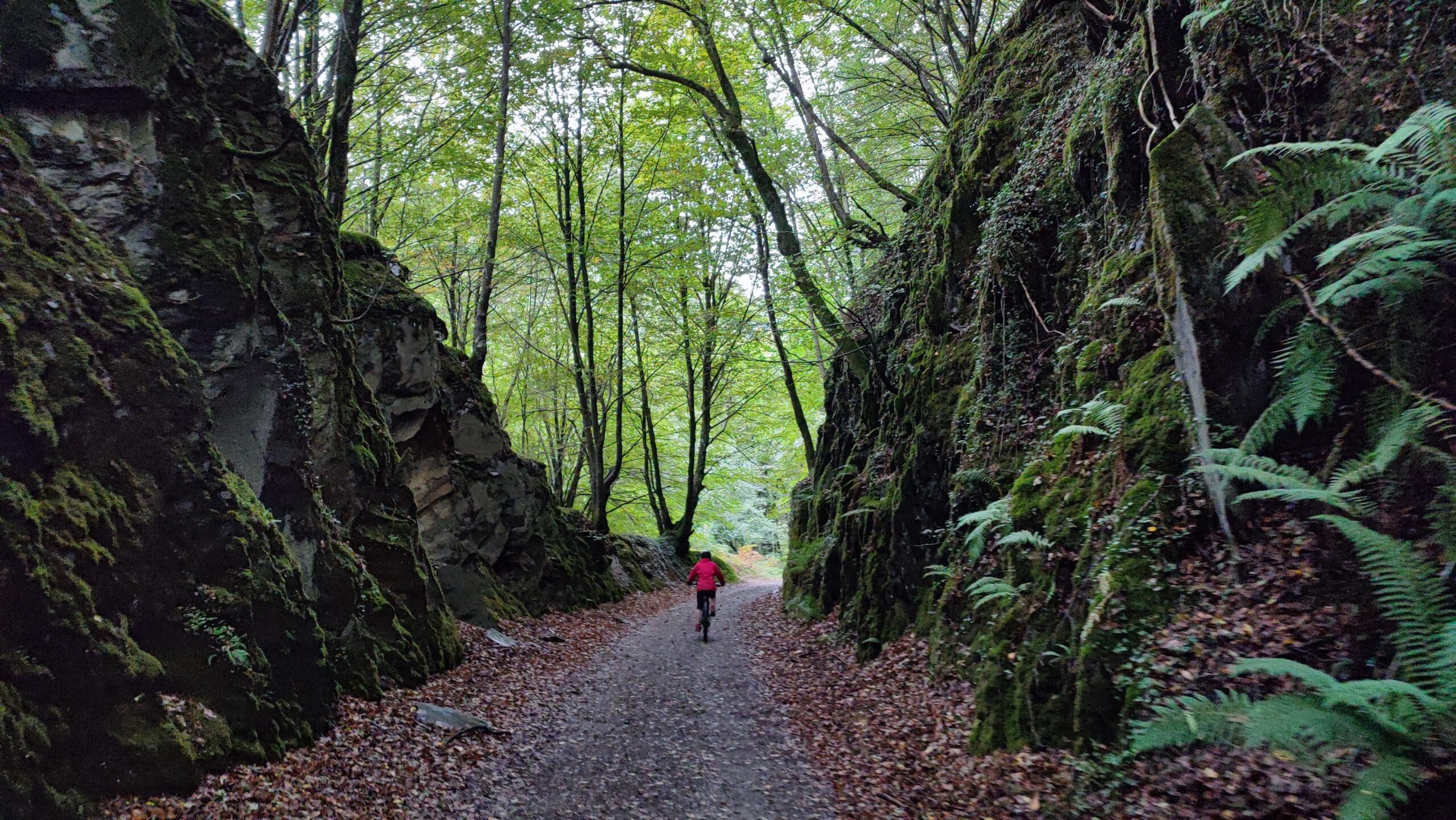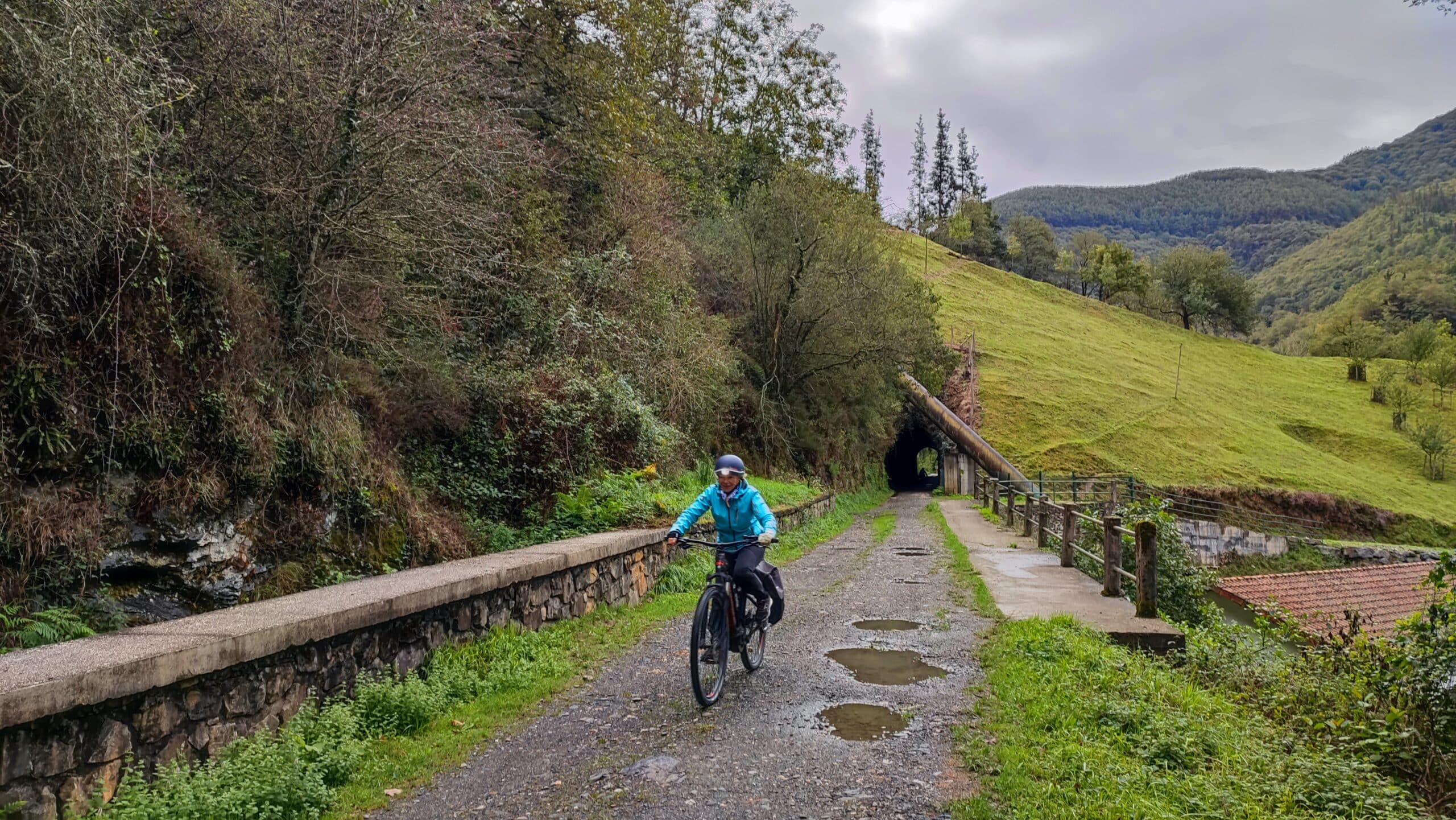
Te ofrecemos un viaje en bicicleta, en grupo guiado, por dos de las vías verdes más bonitas en cuanto a paisaje y entorno. Pedalea de Vitoria a San Sebastián a través de 3 provincias conociendo tres capitales importantes del País Vasco y Navarra: Vitoria, Pamplona y San Sebastián. Prácticamente todo el viaje transcurre por vías verdes, caminos o bicicarriles alejados de las carreteras. Por lo que es una buena opción para pedalear despacio en plena naturaleza desde la llanada alavesa hasta el mar.
Reserva llamando al 961 06 49 03, envíanos un mail a reservas@saoviajes.es o rellena el formulario en «consulta o reserva»
Día 1: Llegada al primer hotel la noche previa a la primera etapa. Llegada a Vitoria – Gasteiz
Día de relax para visitar la capital del País Vasco el día antes de empezar a pedalear. Aquí recibiréis las bicicletas en caso de haberlas alquilado. Hoy es día para relajarse y prepararse para un viaje en bicicleta precioso.
Día 2: Vitoria – Gasteiz – Maestu 31 km y 460 m de desnivel
Comenzaremos a pedalear suavemente por la Vía Verde del Ferrocarril Vasco Navarro alejándonos de Vitoria. Merece la pena una rápida parada en el Santuario de Nuestra Señora de Estíbaliz, una joya del arte románico del siglo XI.
A continuación nos vamos adentrando cada vez más en bosques típicos de la zona junto a pequeños pueblos. Este primer tramo está condicionado por el túnel de Laminoria (2.195 m.), que está actualmente intransitable y cerrado. Para salvarlo, se puede hacer por un corto desvío por carretera sin tráfico o bien a través de una pista de montaña en la que probablemente se tenga que hacer a pie por las pendientes durante la subida y la bajada. Este tramos de pista es el único tramo que presenta una cierta dificultad. Eso si, es un tramo precioso en pleno bosque autóctono en la Montaña Alavesa.. Una vez abandonamos la pista de montaña, descenderemos el puerto de Guereñu hasta volver al trazado original de la Vía Verde, donde a los pocos kilómetros y tras pasar por un túnel sonoro, llegaremos a Maestu.
Día 3: Maestu – Estella 45 km y 60 m de desnivel
Tras el desayuno, y al poco de comenzar a pedalear, abandonaremos tierras alavesas para entrar en Navarra. Donde llegaremos al final de la Vía Verde del Ferrocarril Vasconavarro en Estella, situada en la antigua estación de Ferrocarril de Estella, hoy una estación de autobuses.
Día 4: Estella – Pamplona 60 km y 700 m de desnivel
Dejarás atrás la Vía Verde del Vasco Navarro y tras un buen desayuno el viaje en bicicleta transcurrirá por la Eurovelo 1 siguiendo el Camino de Santiago Francés en sentido opuesto. El paisaje cambia totalmente, y tras una etapa preciosa llegaremos a Pamplona. Merece la pena conocer el centro histórico de la ciudad.
Día 5: Pamplona – Lekunberri 40 km y 450 m de desnivel
Empezaremos el pedaleo hacia la salida de la capital de Navarra. Bajo la atenta mirada del monte San Cristóbal, iremos aproximándonos al inicio de la Vía Verde del Plazaola. Recorreremos sus primeros kilómetros ascendiendo suavemente hasta la antigua estación de tren de Lekunberri.
Día 6: Lekunberri – San Sebastián 65 km y 170 m de desnivel
La última etapa es fascinante. En cuanto comenzamos a pedalear, dejando atrás la antigua estación, nos adentraremos de golpe en un paisaje precioso. Verdes laderas, bosques y valles nos acompañaran hasta el final de la Vía Verde. En sus más de 40 túneles hay que abrigarse, y tendremos que poner pie a tierra en los desvíos obligatorios para salvar los túneles cerrados, pero merecerá la pena.
Cuando llegamos a Andoain, pedalearemos por caminos rurales y bicicarriles hasta la capital Guipuzcoana. Aquí, junto a las playas de San Sebastián, veremos el mar.
Día 7: Fin del viaje
Desayuno y fin del viaje.
- Alojamiento y desayuno.
- Traslado de equipaje.
- Guía pedaleando con el grupo (Inglés/Español).
- Documentación del viaje y recorrido en formato digital.
- Briefing.
- Acceso app de navegación GPS.
- Seguro de viaje médico.
- Asistencia ciclista en ruta.
- Regalo de bienvenida.
- Teléfono de asistencia de 9h a 18h.
Se puede realizar con bicicleta propia o alquilar una (de montaña o híbrida).
Todos los públicos.
Dificultad MEDIA.
Del 23 al 29 de junio
Del 14 al 20 de julio
del 11 al 17 de agosto
Del 1 al 7 de septiembre
